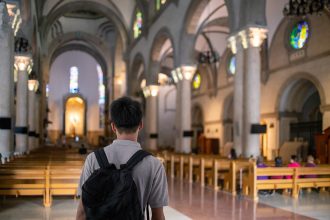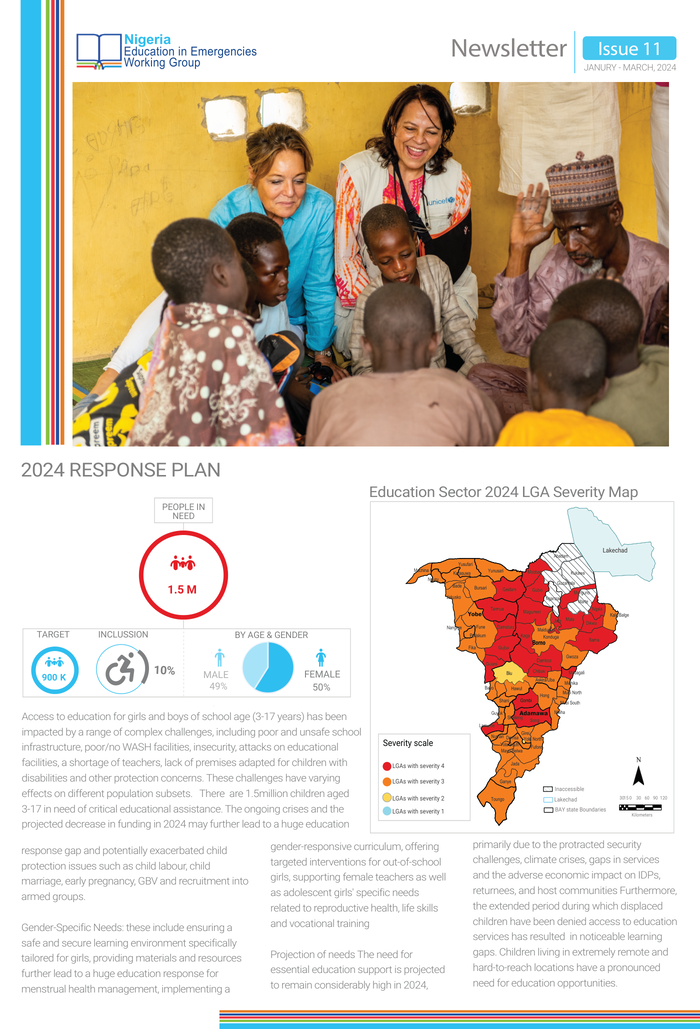Access to education for girls and boys of school age (3-17 years) has been impacted by a range of complex challenges, including poor and unsafe school infrastructure, poor/no WASH facilities, insecurity, attacks on educational facilities, a shortage of teachers, lack of premises adapted for children with disabilities and other protection concerns. These challenges have varying effects on different population subsets. There are 1.5 million children aged 3-17 in need of critical educational assistance. The ongoing crises and the projected decrease in funding in 2024 may further lead to a huge education response gap and potentially exacerbate child protection issues such as child labour, child marriage, early pregnancy, GBV and recruitment into armed groups.
Gender-Specific Needs: these include ensuring a safe and secure learning environment specifically tailored for girls, providing materials and resources further lead to a huge education response for menstrual health management, implementing a gender-responsive curriculum, offering targeted interventions for out-of-school girls, supporting female teachers as well as adolescent girls’ specific needs related to reproductive health, life skills and vocational training Projection of needs The need for essential education support is projected to remain considerably high in 2024, primarily due to the protracted security challenges, climate crises, gaps in services and the adverse economic impact on IDPs, returnees, and host communities Furthermore, the extended period during which displaced children have been denied access to education services has resulted in noticeable learning gaps. Children living in extremely remote and hard-to-reach locations have a pronounced need for education opportunities.







